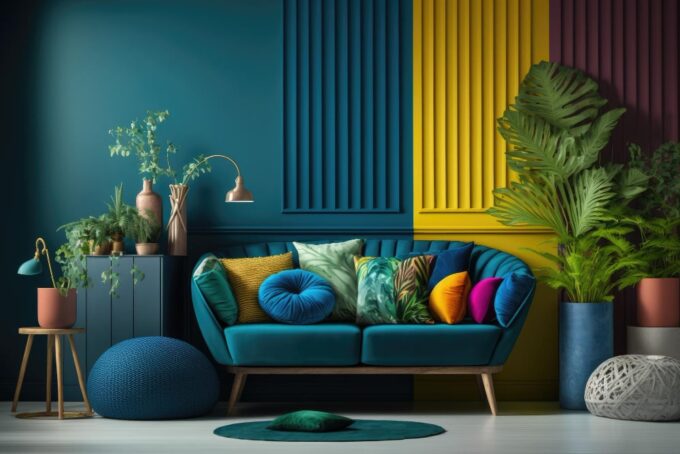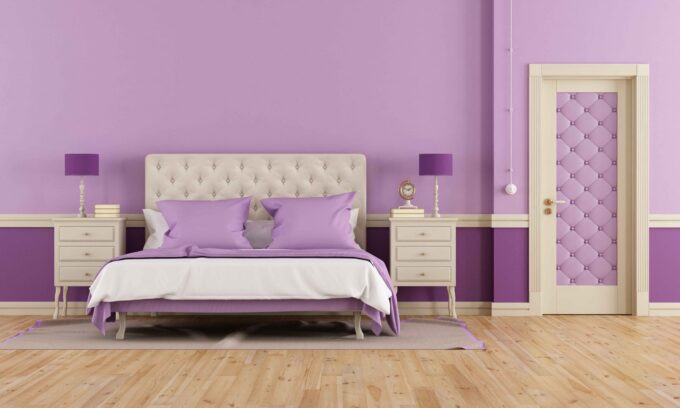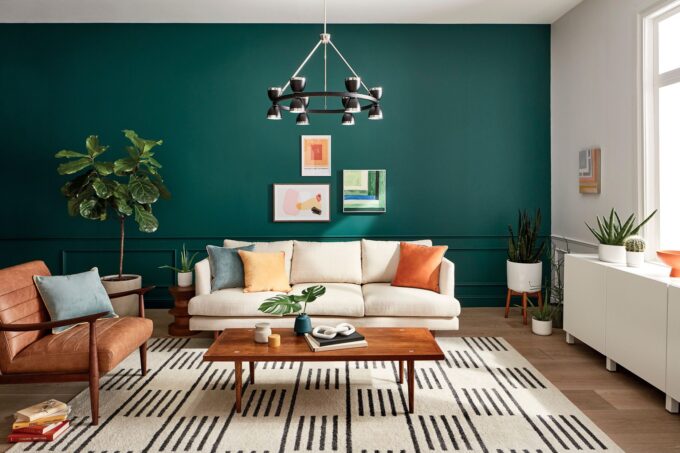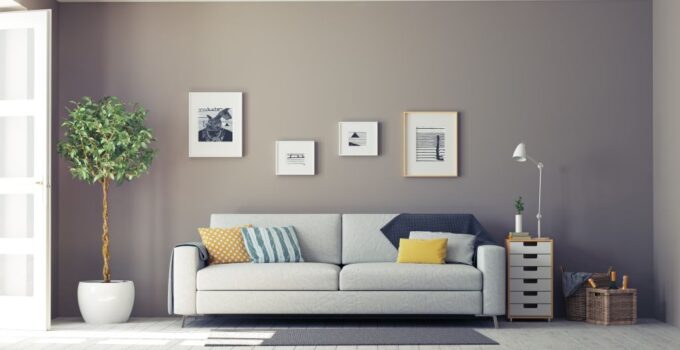Your home is where you unwind, connect with loved ones, and make countless memories, and its design plays a fundamental role in setting the stage for these experiences. Whether you’re moving into a new house, planning a renovation, or simply getting inspiration to refresh your current space, the world of interior home design offers boundless ways for your creativity.
Interior designing is not just about making things look good; it’s about making your home work well for you. This means choosing the right furniture, colours, lighting, and other things to make your home a place you love.
Picking the right colours for your home is important in interior design. Colours can make a room feel warm and welcoming, make it seem big and open, or create a certain mood or style. So, let’s start on this colourful adventure together and discover how to make your home especially reflect your personality and lifestyle with the best colours for different rooms in your home and effective interior home designs.
Understanding Colour Theory
Colour theory is like the ABCs of design. It all starts with the colour wheel, which is a tool that shows how colours are connected. Think of the primary colours (red, blue, and yellow) as the basic building blocks for all other colours. When you mix two primary colours, you get secondary colours (like orange, green, and purple).
If you combine a primary colour with a secondary colour, you get tertiary colours (like red-orange or blue-green). Now, when we talk about colour harmony, we mean how colours go together. Complementary colours are opposites on the wheel, and they make a strong contrast.
On the other hand, analogous colours are next to each other on the wheel, and they create a more calming look. By understanding these simple ideas, you can choose colours for your home that look great and make you feel good.
The Psychology of Colours

Source: cityfurnish.com
This shows how different colours can change how you feel. For example, blue can make you feel calm, while red can make you feel excited. So, when you’re picking colours for your rooms, you need to think about how you want to feel in that space. For example, If you want your bedroom to be a relaxing place, you might choose soft blues or gentle greens.
But if you want your kitchen to be lively and energetic, you might go for bright reds or yellows. Each colour can create a different mood, so it’s essential to choose the right colours to match the kind of atmosphere you want in each room.
Staying Updated with The Current Colour Trends
Keeping up with colour trends is like knowing what’s popular in the world of colours right now. It’s a bit like following fashion trends but for your home. For instance, if the colour of the year is a soft shade of green, you might see it everywhere in interior design magazines and stores. But it’s also important to remember that your home should reflect your style and what you love.
So, let’s say you adore warm, earthy colours and vintage furniture, even if the trend is all about bright and modern colours, you can find ways to mix in some of your favourite earthy tones and vintage pieces to make your home feel more like you. It’s like adding your unique flavour to the latest trends, and that’s what makes your home truly special.
How to Select Colours for Specific Rooms?

Source: indigopaints.com
Selecting the right colours for specific rooms is like choosing the right ingredients for a recipe; each room has its purpose and needs its special touch.
-
Bedroomcolour palettes for relaxation:
Think of your bedroom as a sanctuary for rest. Soft, calming colours like light blues, gentle purples, or muted greys can create a tranquil atmosphere, much like a soothing lullaby. These colours can help you relax and unwind, making it easier to sleep. For example, a light lavender or a pale blue can give your bedroom a peaceful and dreamy vibe.
-
Kitchen colour choices for a lively atmosphere:
The kitchen is often the heart of the home, where you cook, eat, and spend time together. Bright and lively colours like warm yellows, vibrant reds, or energetic greens can add a sense of excitement and warmth to the space, like a joyful family gathering. For instance, a lively and cheerful yellow can make your kitchen feel like a sunny and inviting place for meals and conversation.
-
Living room colours for comfort and socialising:
In the living room, comfort and socialising are key. Neutral tones such as beige, soft greys, or warm browns can create a cosy and inviting setting, much like a friendly gathering around a fireplace. These colours provide a versatile backdrop for your furniture and decor. For example, a warm beige with soft brown accents can make your living room feel like a comfortable and welcoming space for both family and guests.
-
Bathroom colours for a fresh and clean feel:
Bathrooms should feel clean and refreshing, like a spa retreat. Crisp and clean colours such as bright whites, light blues, or soft greens can create a fresh and rejuvenating ambience, much like the feeling after a relaxing bath or shower. For instance, a crisp white with pale blue accents can make your bathroom feel like a clean and serene escape.
Remember, the key is to align the colours with the room’s intended purpose and your personal preferences, creating a harmonious and functional living space.
For better work, consulting with an interior designer or a colour expert is a prudent step.
The Impact of Lighting when Choosing a Colour

Source: bhg.com
Lighting has a big say in how we see colours in our homes. There are two main types: natural light from the sun and artificial light from lamps and bulbs. Both can change the way colours look. For instance, a room with lots of sunlight might make colours appear brighter and more vivid, while artificial light can sometimes make colours seem dull or different.
So, when picking colours for your walls or furniture, it’s important to think about the kind of light in the room and how it will affect the colours. This way, you can choose colours that will look great no matter if it’s a sunny day or a cosy evening. It’s like making sure your favourite shirt looks good both in daylight and under the warm glow of your room’s lamps.
Conclusion
In summary, this article focuses on the pivotal role of colours in interior home designs. It covers essential aspects such as the basics of colour theory and how different colours can influence emotions and moods. The guide also delves into staying in tune with current colour trends while encouraging individuals to infuse their unique personal style. It offers insights into selecting colours tailored to specific rooms, considering the ambience you desire.







